A Complete Analysis of “Man Bathing” by Edvard Munch
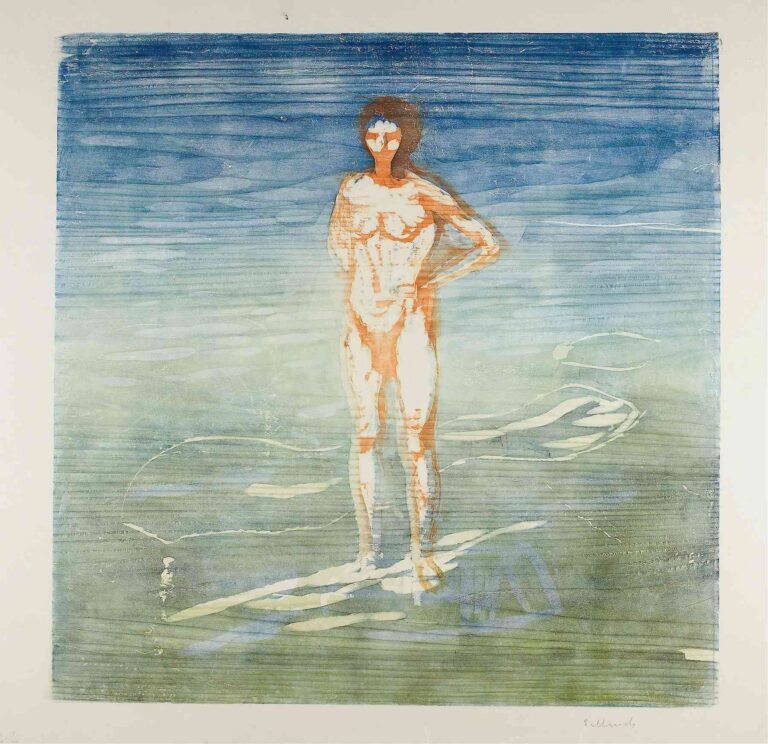
Discover an in-depth exploration of Edvard Munch’s 1899 “Man Bathing,” examining its composition, color contrasts, symbolic depth, and psychological resonance.

Discover an in-depth exploration of Edvard Munch’s 1899 “Man Bathing,” examining its composition, color contrasts, symbolic depth, and psychological resonance.
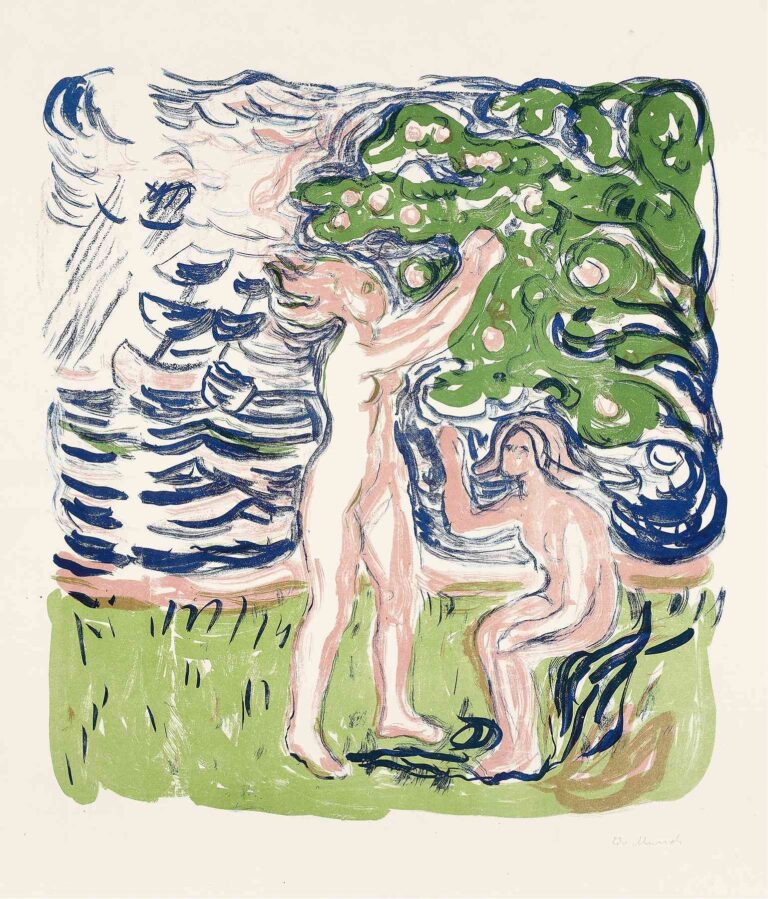
Explore Edvard Munch’s 1915 print “Neutralia”—a mesmerizing color woodcut where two nude figures, sinuous lines, and verdant hues converge in a meditation on neutrality, nature, and human vulnerability.
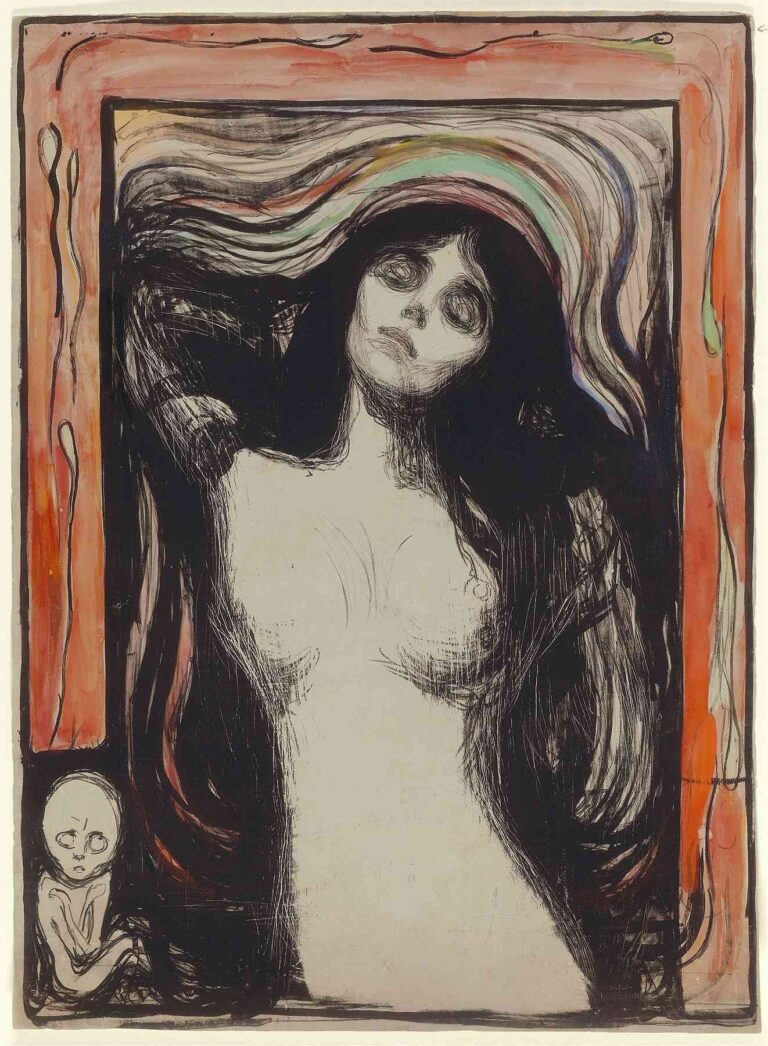
Discover the layered symbolism and innovative technique behind Edvard Munch’s “Madonna” (1894–95), where sacred iconography merges with eroticism, life, and death in a haunting hand-colored lithograph.

Discover Edvard Munch’s 1902 woodcut “Head of an Old Man with Beard”, where expressive lines, stark contrasts, and psychological depth converge in a universal meditation on aging and existence.
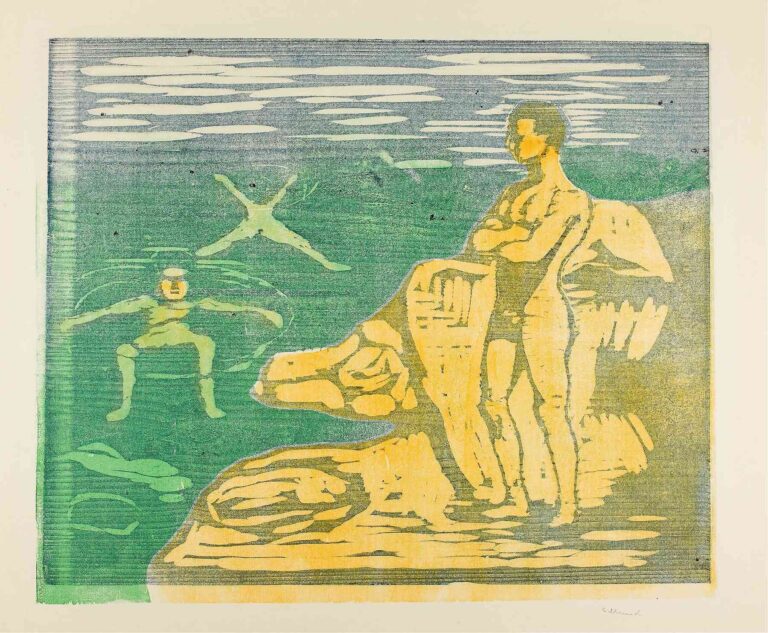
Delve into Munch’s 1899 “Boys Bathing”, a color woodcut where simplified figures, evocative greens, and expressive composition probe themes of youth, vulnerability, and transformation.
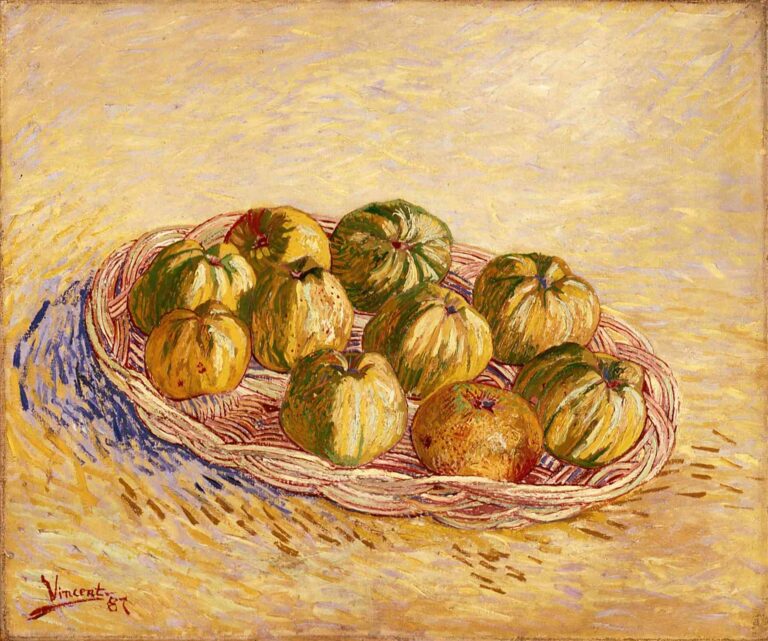
Discover Van Gogh’s 1887 “Still Life, Basket of Apples,” where golden apples, woven wicker, and dynamic brushstrokes merge in a vibrant study of color, form, and symbolism.
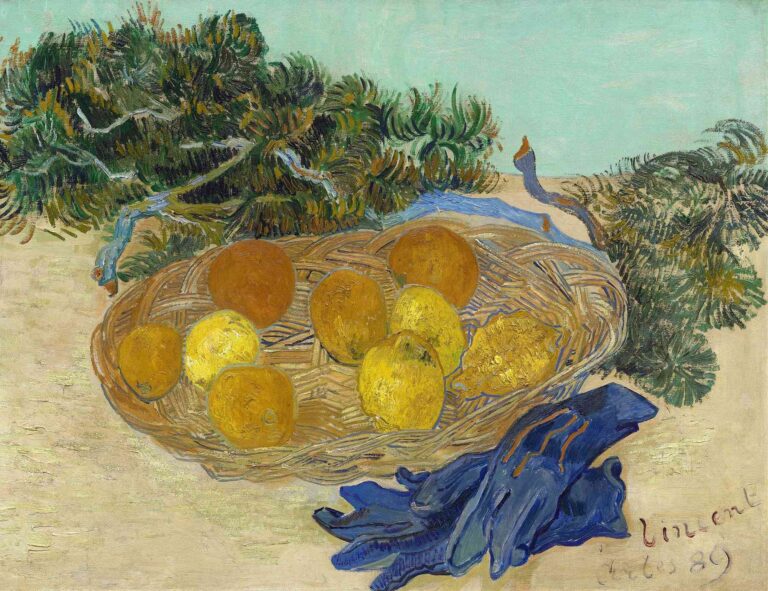
Explore Van Gogh’s 1889 “Still Life of Oranges and Lemons with Blue Gloves,” where vibrant citrus, cobalt gloves, and gestural brushwork converge in a masterful study of color, texture, and symbolism.
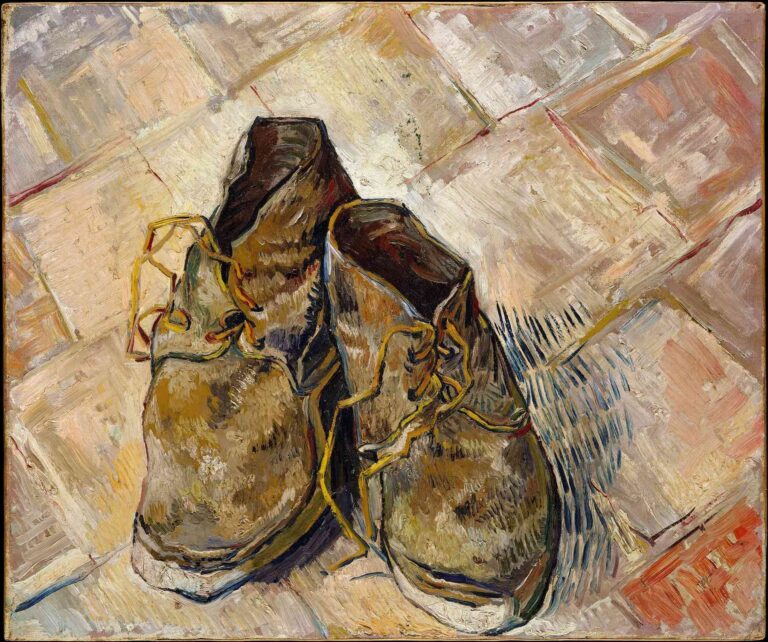
Uncover the symbolic power of Van Gogh’s 1888 still life “Shoes,” where textured impasto, warm earth tones, and dynamic composition elevate worn boots into enduring icons of labor and identity.
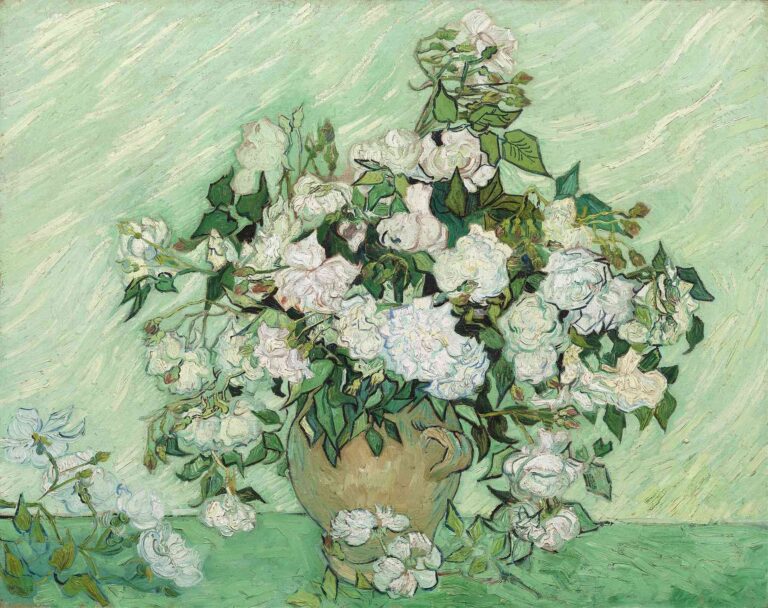
Delve into Van Gogh’s serene 1890 still life “Roses,” where creamy blossoms, mint-green surroundings, and sculptural brushwork capture the sublime interplay of beauty and transience.
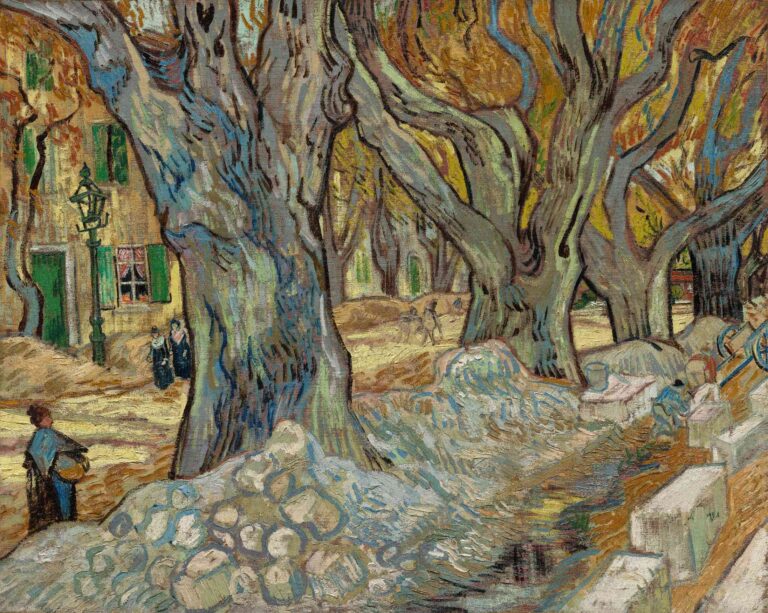
Discover Van Gogh’s 1889 masterpiece “The Large Plane Trees,” where rhythmic trunks, autumnal light, and road menders converge in a rich study of nature, labor, and renewal.
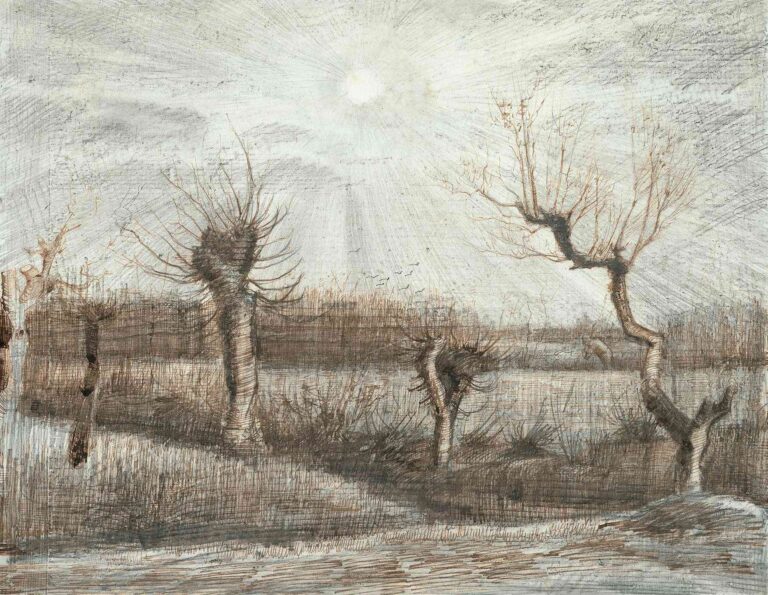
Explore Van Gogh’s 1884 drawing “Têtards,” where pollarded willows, ink wash, and delicate tonal variations reveal early signs of his expressive landscape vision and seasonal symbolism.
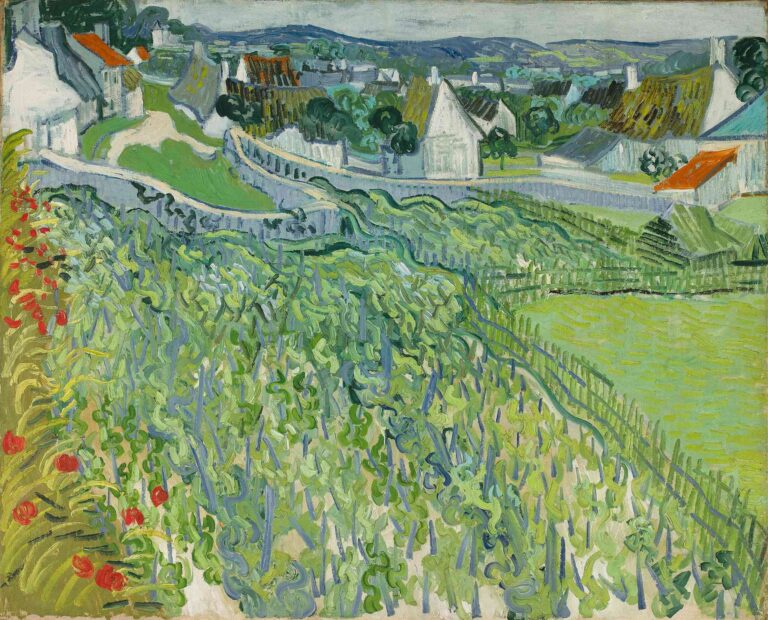
Explore Van Gogh’s 1890 masterwork “Vineyards at Auvers,” where bold brushstrokes, vibrant greens, and rhythmic composition capture the verdant pulse of a summer hillside vineyard.
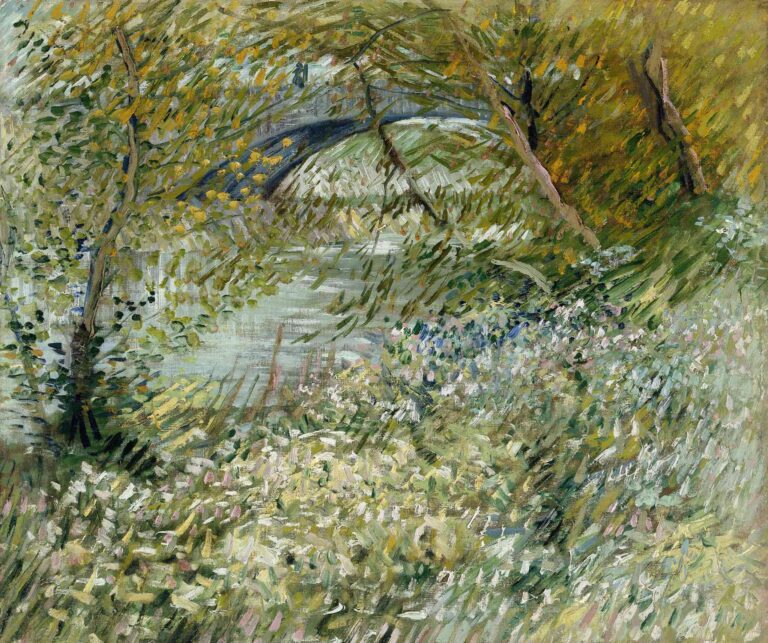
Dive into Van Gogh’s 1887 “River Bank in Springtime,” where delicate brushwork, fresh greens, and soft blues capture the vibrant calm of a riverside awakening.
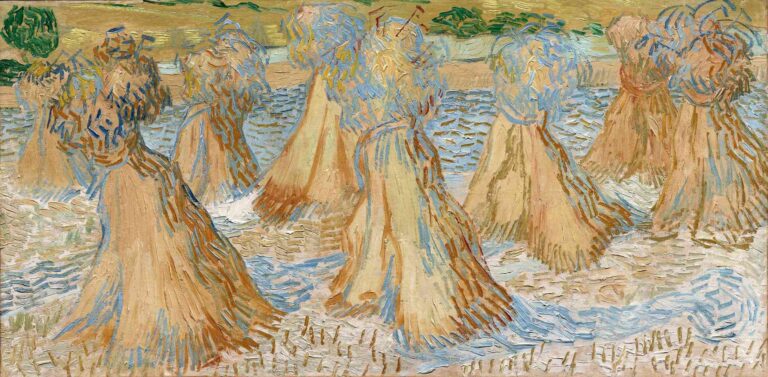
Explore Van Gogh’s 1890 “Sheaves of Wheat,” where sunlit bundles of harvested grain, dynamic brushwork, and serene composition reflect the artist’s final Auvers vision and nature’s timeless cycles.
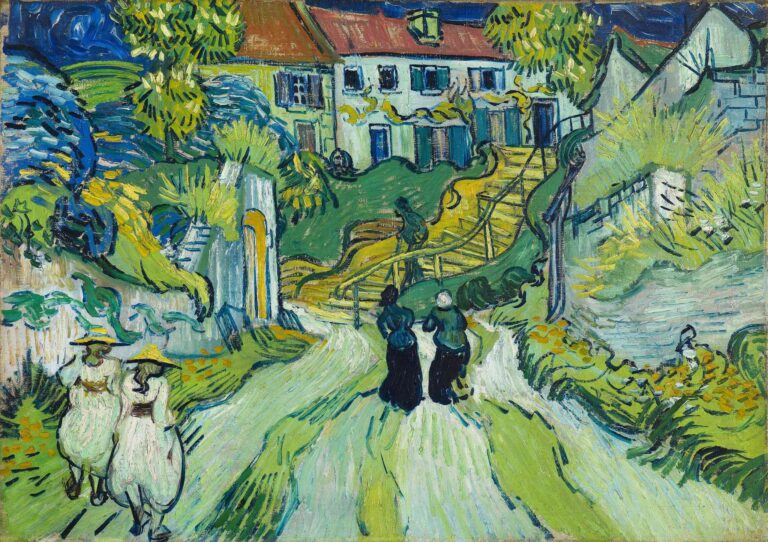
Discover Van Gogh’s vibrant 1890 canvas “Stairway at Auvers,” where bold greens, dynamic brushstrokes, and village figures on a sunlit stairway capture late summer life and human connection.

Explore Van Gogh’s 1883 “Flower Beds in Holland,” where neat bulb-field geometry, emerging color experiments, and intimate rural labor converge in a pioneering plein-air work.

Discover Van Gogh’s poignant 1890 canvas “Green Wheat Fields, Auvers,” where swirling brushwork and cool greens capture early summer’s promise and the artist’s final creative spark.
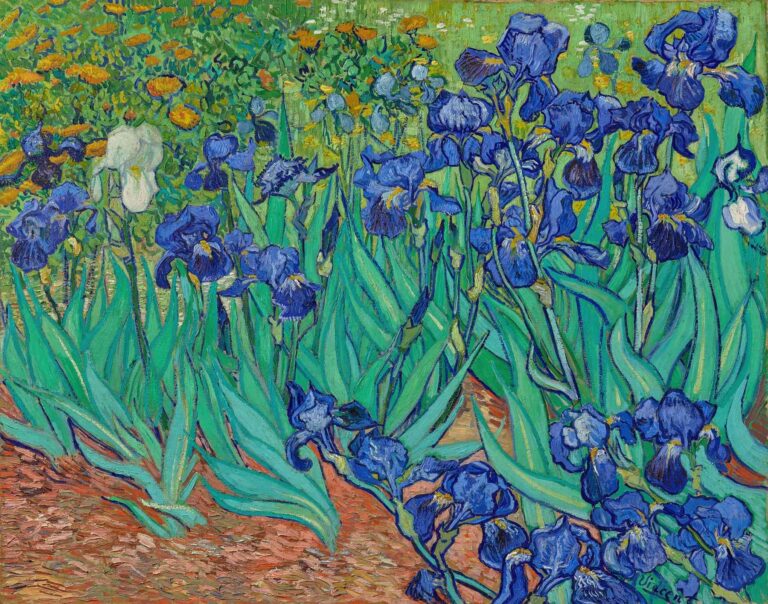
Explore Van Gogh’s 1889 “Irises,” where vibrant blues, dynamic impasto, and rhythmic composition transform garden blooms into a poignant symbol of renewal.